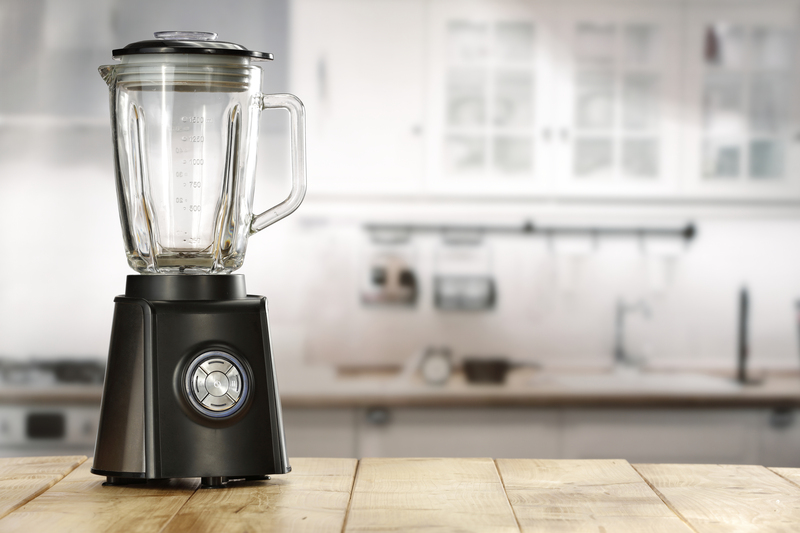Myth-Busting Household Cleaning
Posted on 23/09/2025
Myth-Busting Household Cleaning
Cleaning your home can be a daunting task, particularly when you're bombarded with a plethora of cleaning myths and misconceptions. From the effectiveness of common household products to the supposed dangers of certain cleaning methods, many myths can lead to inefficiencies or even potential harm. This comprehensive guide aims to myth-bust common household cleaning misconceptions and provide you with reliable, science-backed information to maintain a sparkling clean home.
Myth 1: Vinegar Can Clean Everything
Vinegar is often lauded as a miracle cleaning solution capable of tackling any grime or stain. While vinegar is indeed a versatile and effective cleaner, its efficacy has its limits.
Vinegar, which contains acetic acid, is particularly good at cutting through mineral deposits, grease, and grime. However, it is not suitable for all cleaning tasks. For example, vinegar should not be used on natural stone surfaces like granite or marble, as the acid can erode the stone. Additionally, vinegar can dull some hardwood floors over time. Always dilute vinegar appropriately and do a spot test on surfaces before widespread application.

Myth 2: More Detergent Equals Cleaner Laundry
It's a common belief that using more detergent will result in cleaner clothes. However, excess detergent can lead to a residue buildup on your clothing and inside your washing machine. This residue can trap bacteria and odors, making your clothes less clean in the long run.
Follow the guidelines on the detergent packaging and adjust based on your load size and soil level. Modern washing machines are particularly efficient and often require less detergent than you might think. High-efficiency (HE) washers need even less detergent due to their minimal water usage. Overuse also contributes to wear and tear on your machine, potentially leading to costly repairs or replacement.
Myth 3: Bleach Is the Best for Disinfecting
Many people believe that bleach is the ultimate disinfectant for all cleaning purposes. While bleach is effective in killing bacteria and viruses, it isn't always the best or most appropriate choice for every surface.
Bleach can be particularly harsh and should be used cautiously, especially around children and pets. It can discolor textiles and damage some surfaces, including wood and metal. Alternatives like hydrogen peroxide or alcohol-based disinfectants can provide effective sanitation without the risks associated with bleach. It's important to follow the contact time recommendations for any disinfectant to ensure proper sanitation.
Myth 4: Feather Dusters Are Effective Dusting Tools
The image of someone dutifully dusting with a feather duster is iconic, but these tools are more decorative than functional. Feather dusters tend to push dust around rather than capture and remove it.
Microfiber cloths or electrostatic dusters are much more efficient for dusting. They trap and hold onto dust particles, rather than just moving them to another location in the room. Regular dusting with appropriate tools can improve air quality and reduce allergens in your home.
Myth 5: Cleaning Products Should Be Left to Sit for Longer
While some cleaning solutions do require a dwell time to be effective, leaving products on surfaces longer than recommended can sometimes do more harm than good. For example, leaving a bleach solution on a surface for too long can cause corrosion.
Always read the instructions on your cleaning products to understand the advised contact time. Overexposing surfaces to chemicals can degrade materials and even pose health risks. Each cleaner has its specific dwell time, and sticking to these guidelines ensures optimal effectiveness without damage.
Myth 6: Hot Water Cleans Better
It's often assumed that the hotter the water, the better the cleaning results. While hot water can indeed help to dissolve grease and kill certain bacteria, it isn't universally the best choice.
For instance, using hot water to clean protein-based stains like blood or eggs can actually cause the proteins to cook and set into the fabric. Cold water is more effective for these types of stains. Many modern detergents are also designed to work well in cold water, making them both effective and energy-saving.
Myth 7: You Only Need to Clean When Things Look Dirty
This myth can lead to serious hygiene issues within your household. Many germs and pollutants are invisible to the naked eye, and waiting until you see dirt often means waiting too long.
Routine cleaning is critical to maintaining a healthy living environment. Regularly cleaning high-touch surfaces, such as doorknobs, light switches, and countertops, can minimize the spread of germs. Adopting a proactive cleaning schedule helps to ensure that your home is not only visibly clean but also hygienically safe.

Myth 8: All "Natural" Cleaning Products Are Safe
With the rise of eco-consciousness, many turn to "natural" cleaning products believing they are entirely safe. However, the term "natural" is not regulated, and such products are not necessarily non-toxic or hypoallergenic.
For instance, essential oils, common in natural cleaners, can cause allergic reactions or be harmful to pets. Always read labels carefully and research ingredients to make informed decisions about the safety and efficacy of natural cleaners. Remember, even natural products can pose risks if misused.
Conclusion
Cleaning myths are abundant, often leading to ineffective practices and potential harm. By debunking common misconceptions, households can benefit from more efficient, safer, and reliable cleaning methods. Adopting informed practices not only helps maintain a cleaner home but also ensures the well-being of all its inhabitants. Remember, science and evidence-based practices should guide your cleaning routines rather than popular myths.






